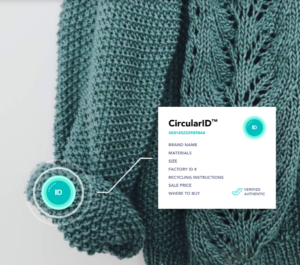Transparency and Resilience in Fashion
Covid-19 has highlighted the fragility of many fashion supply chains. Brands cancelling or refusing to pay for orders have forced millions of garment makers to lose their jobs and manufacturers to take sizeable losses. Manufacturers and brands alike have significant over-stock, which will be sold at discount prices or, more likely, be sent to land fill or incinerated. At the same time, the interdependence of global supply chains has held back many recovery efforts. For consumers, this period of “consumption quarantine” has accelerated the growing apathy towards fast fashion and wasteful business models, heightening expectations for sustainability actions.
As fashion players now look to recover, supply chain tracking and traceability solutions can:
- Offer resiliency against future market shocks
- Increase value proposition for sustainable fashion
- Enable circular business models.
Attractiveness
In 2016, the global textiles, clothing, leather and footwear (TCLF) industry was estimated to be worth $1.3 trillion dollars, representing the second largest consumer goods industry. However, the industry is highly wasteful, with over $100 billion lost to waste annually.
Supply chain monitoring, tracking systems and digital IDs are being developed to track textiles and apparel from raw material sourcing to end-of life, with the goal of preventing waste and boosting efficiency. These solutions benefit players across the supply chain in various ways:
- Suppliers and manufacturers can validate the origin and composition of textiles.
- Brands can validate sustainability claims and understand (and improve) their supply chains to ensure efficiency and resilience.
- Consumers can check and compare the Environmental, Social and Governance (ESG) credentials of clothes, creating a competitive advantage for brands who can be transparent about their supply chains.
When clothes have a unique ID value, they can be monitored throughout the product lifecycle, thereby enabling circular business models such as repair and reuse. Circular business models can also scale because garment information can be attained faster using less specialized equipment.
Extended Producer Responsibility (EPR) policies, as suggested by the EU, may force brands to prove more sustainable end-of-life options for their products and this will require post-consumer tracking of products.
Additionally, counterfeiting costs the fashion industry $450 billion a year. With the ability to assign a unique identity to garments, material origin and composition can be validated and guaranteed e.g. 100% Egyptian cotton.
Business Models
Innovators have developed tagging hardware, including washable RFID (radio frequency identification) tags, invisible fluorescent materials, QR codes, artificial DNA and microbiome technologies, all of which give individual items of fabric a unique code that can be scanned and identified throughout the product’s lifecycle. Associated software solutions have also been developed to aggregate, store and analyze data, often using the internet of things and/or blockchain.
Some innovators like Oritain offer traceability and testing services for brands, raw material producers and manufacturers who wish to validate materials by checking samples. However, these take time, often missing the window of opportunity to counter fraud.
Tagging Hardware
For hardware solutions, start-ups are offering a fixed price per ton of fabric or per number of garments tagged. TailorLux has developed optical fingerprints using a ceramic-based ink applied to thread. The company has also developed corresponding scanners which reveal unique textile information as well as thread composition in blended textiles.

In March 2019, TailorLux provided expertise and technology for the Organic Cotton Traceability trial led by the C&A Foundation, Organic Cotton Accelerator and Fashion for Good. Cleantech Group spoke to Alex Deitermann, Managing Director of Tailorlux, who said, “It’s not only sustainability, fraud protection, quantification and accountability that our solution provides but a true return on investment. The data creates a premium product.”
Software
For software solutions, SaaS (software as a service) and subscription packages are offered; however, some are product-feature dependent. Software innovators are exclusively focusing on the fashion industry, while tag developers are diversifying to pharmaceutical, food and automotive industries. Eon, developer of IoT software that connects and stores digital identities of connected apparel, offers SaaS packages and platform infrastructures which allow other businesses to access to Eon’s API.

Cleantech Group spoke to Natasha Franck, founder of Eon, who said “We think any development needs an industry-specific approach at the beginning. Now that we have a grasp and a vision around fashion, on a relationship and partnership basis, we are starting to look at other industries, like packaging.”
Systems
Other innovators offer full supply chain tracking and risk analysis services. TrusTrace has developed an end-to-end digital platform for product traceability, providing support with a range of means, including: supply chain mapping, material tracing, certificate validation at product/factory level, product carbon footprint calculation and customer communications. In September 2019, TrusTrace raised $1.1 million in Series A investment from Backing Minds. Cleantech Group spoke to Hrishikesh Rajan, CSO and Founder of TrusTrace, who said, “Our core value proposition is product traceability. The supply chain is not digital. In fact, as you keep going down the value chain, it’s increasingly paper-based. Our secondary value proposition is that brands want to be on the forefront of sustainability, thus we want to help them with product compliance and customer communication.”
Competition
The industry is in the early stages of development and most investments into start-ups are seed and Series A. However, industry collaboration, brand adoption and NGO support is accelerating supply chain tracking and transparency technologies. Speaking on industry competition in supply chain tracking, Hrishikesh Rajan of TrusTrace said “There are a few in the market, which is good, as it means there is a market. Everyone goes about it in a different way. Some focus on many industries, but over time they have found their niche.”
Brands are significant investors in this ecosystem, with the majority of pilots led by brand consortiums. In July 2019, EON collaborated with H&M, Microsoft, PVH, Target and Waste Management to set up the CircularID Protocol to establish a global language of connected products for supply chain tracking, transparency, customer engagement, authenticity and circular business models.
Innovators are also receiving significant support from material trade associations such as Cotton USA due to members’ interest in validating the use of their materials to prevent false claims.
Keep an eye on…
Chemical recycling has the potential to infinitely recycle textile fibers, producing high-quality and high-value threads and textiles. This is being heralded as a solution for the industry to retain the over $100 billion lost annually to textile waste and to avoid the environmental and social impact of sourcing raw materials. Chemical Recycling Companies like Blocktexx and Evrnu are also looking to work with digital ID innovators to reduce the time spent testing products’ material make-up. This may be a key enabler for chemical recycling to scale and reduce operating costs.


